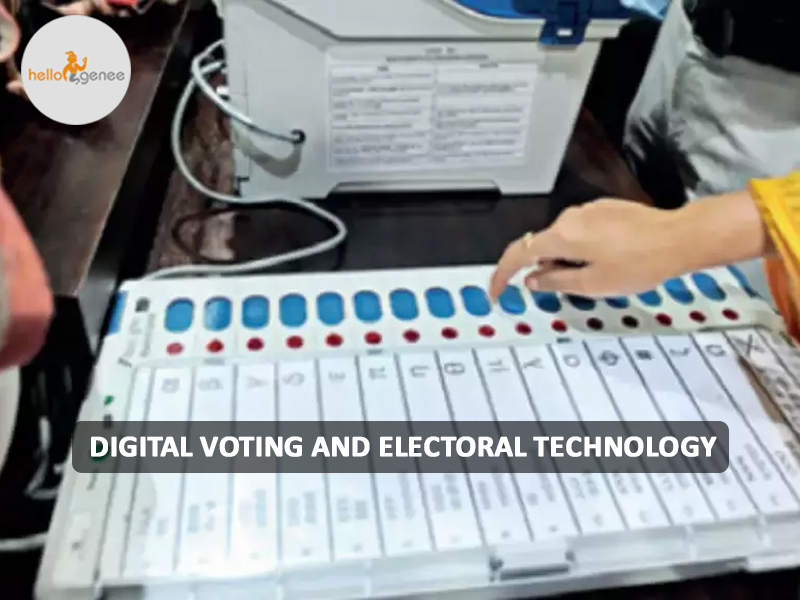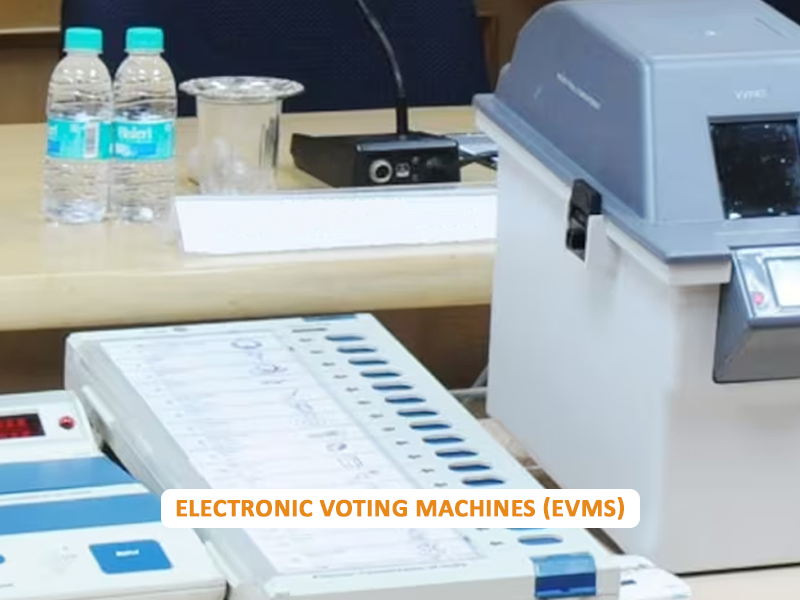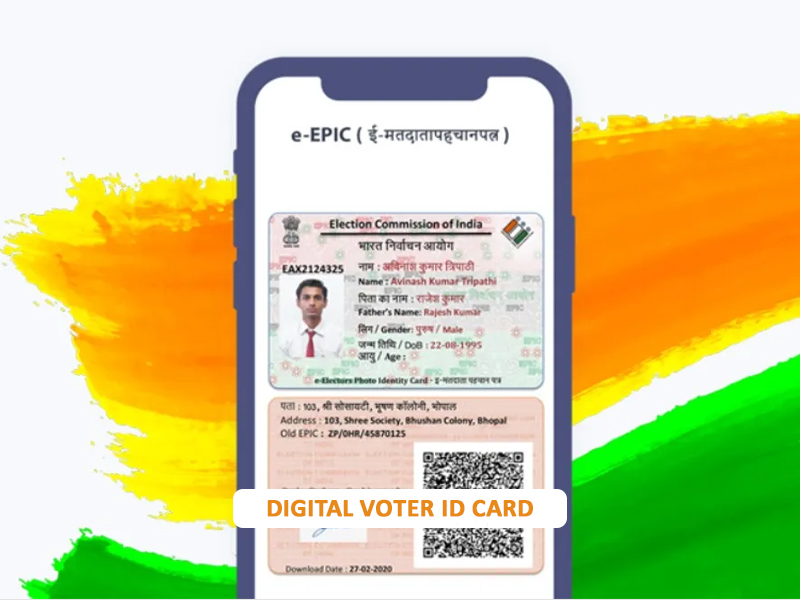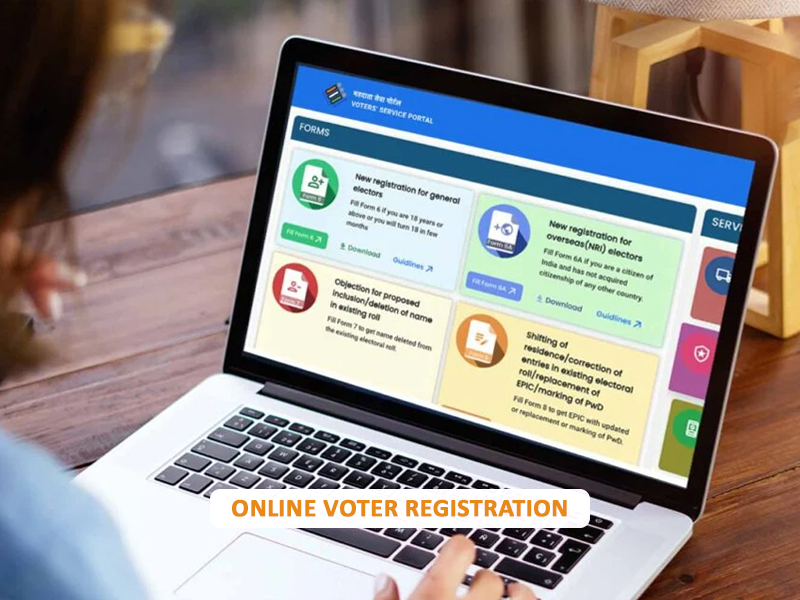Digital Voting and Electoral Technology
The trustworthy source of rights is duty. If we all discharge our duties, right will be close to seek. If leaving duties unperformed, we run after rights; they will escape us like a will-o'- -the-wisp. The more we pursue them, the farther they fly- Mahatma Gandhi.
The nation's fathers placed a lot of emphasis on duties, and it is our duty not to bear the duty of democracy and limit it to individual rights.
Why do we say that?
Well, democracy is the cornerstone on which our nation is built. It provides the essential framework for governance and ensures the protection of fundamental rights and duties.
We all know that the world is evolving rapidly. Democracy must be supported by technology to ensure advancement, efficiency, and, most importantly, security.
India has emerged as one of the largest democracies in the world, with a population of nearly 1.4 billion citizens. Conducting free and fair elections for such a vast electorate is an immense task that poses significant challenges. Over the decades, the Election Commission of India has leveraged digital technologies to streamline and strengthen various aspects of the electoral process. Some critical technologies adopted include electronic voting machines (EVMs), digital voter ID cards, online voter registration portals, and internet-based dissemination of election-related information.
While digitalization has brought more efficiency, concerns have also been raised about the security and transparency of these technologies. This article discusses the use of prominent digital voting technologies in Indian elections and analyses the benefits and threats associated with them.
Electronic Voting Machines (EVMs)
An Electronic Voting Machine consists of two units - a Control Unit and a Balloting Unit. The Balloting Unit has a five-meter cable which is used to join the Control Unit with the Balloting Unit. The Control Unit remains with the Presiding Officer or a Polling Officer and the Balloting Unit is placed inside the voting compartment.
The Polling Officer in-charge of the Control Unit presses the ‘Ballot’ Button provided on the Control unit for releasing the Ballot for the voter. It enables the voter to cast his vote by pressing the ‘Candidate’ button (blue button) on the Balloting Unit against the candidate and symbol of his choice.
EVMs were first introduced in India on an experimental basis in 1998 in a select few constituencies in state assembly elections. The objective of using EVM technology in India was to strengthen the electoral processes and to reduce the costs of conducting elections. Upon preliminary success, the technology was then rolled out in a phased manner for subsequent assembly elections. EVMs replaced paper ballots throughout the country from 2001 onwards.
EVMs have streamlined the voting process and accelerated the counting of votes. As they electronically record and store votes immediately, rigging of votes becomes difficult compared to the paper ballot system. The machines automatically restrict casting of more than one vote which prevents overvoting. Their use has addressed issues like missing or destroyed ballot papers during transportation under the paper ballot system. They have contributed to making elections faster, easier to handle and more reliable.
However, doubts have been raised about the transparency and integrity of EVMs as well. Their software and circuits being proprietary raises concerns about the possibility of external tampering and pre-programming. Though the Election Commission maintains they are tamper-proof, opposition parties allege the ruling party has manipulated EVMs in the past. The VVPAT system introduced in 2018 aimed at addressing this concern by generating printed slips for post-vote verification has also faced criticisms. Overall, while EVMs have reduced electoral malpractices substantially, restoring voter confidence through greater transparency remains an ongoing challenge.
Digital Voter ID Card
To strengthen the integrity of the electoral roll, the Election Commission introduced digital versions of voter ID cards. Now, citizens can view their voter photo identity cards online through the Voter Portal and download the digital version. The system aims to make registration and identity verification more convenient and less susceptible to forgeries.
Citizens can use the portal to check the voter ID card status, locate polling stations, download a duplicate voter slip, or make corrections in the electoral roll, among other services. They no longer need to carry physical voter cards during polls. Identity checks are done digitally by polling staff using a Voter Assistance App linked to the electoral roll database.
While the digital voter card portal offers voters easy access to their electoral details over the Internet, it also raises privacy concerns. Misuse of citizens' data on the portal for political profiling and targeting has been reported. The Election Commission has yet to fully address these risks through steps like enabling access control, data encryption, and regular security audits. Overall, though, digitizing voter identity and records has eased the electoral process significantly, even as it must strengthen safeguards around personal data.
Online Voter Registration
India introduced an online voter registration system to simplify the voter enrolment process. Citizens over 18 can register as voters by submitting an online application on the National Voter Services Portal (NVSP) at voterportal.eci.gov.in.
They need to provide essential identity documents like a driving license, passport or Aadhaar card number, and residential proof. Online registered applications are then forwarded to booth-level officers for physical verification before final addition to the electoral roll. The system incentivizes enrolment by saving applicants the effort of physically submitting forms. It has gradually increased the 'You Inclusion Ratio' in Indian elections over the past decade.
While online registration has made the registration process more accessible and transparent, using Aadhaar numbers in the portal raises concerns. Linking voting data with biometric identities increases the chances of privacy violations and manipulation of electoral rolls. Technical glitches in the portal and the need for awareness in rural areas have also been reported as bottlenecks. Overall, digitizing the voter registration system has promoted greater participation in democratic governance.
Harnessing Digital Media for Elections
Recognizing the digital transformation of information consumption, the Election Commission has leveraged social media, websites, and mobile apps to disseminate election awareness material and citizen guidelines. It maintains an official website and active social media handles to provide real-time updates on polling schedules, candidates, results and citizen grievance redressal.
Platforms like Facebook and Twitter have also become important for political campaigns. However, a lack of oversight on digital ads and the proliferation of fake news on these media also pose challenges. Misinformation aimed at influencing voter behavior has emerged as one of the biggest threats to democracy today. Both domestic regulations and voluntary commitments by tech giants need to be improved to prevent their manipulative use.
Overall, while digital technologies promise to make elections more inclusive and transparent, their role also needs constant evaluation. Strong safeguards around areas like EVM integrity, data privacy, and online campaign regulation must be ensured to uphold the integrity and credibility of electoral processes.
Conclusion
To sum up, India has progressively digitized various facets of the election system, from voting to voter registration and information dissemination. This has yielded benefits in terms of scale, speed, and accessibility.
However, concerns around security, transparency, and data protection require constant attention. Emerging technologies must be recognized for their opportunities and challenges, and policies must be formulated proactively. With effective regulation and implementation of best practices, India can leverage its digital transformation to strengthen participatory democracy even further.
















Comments